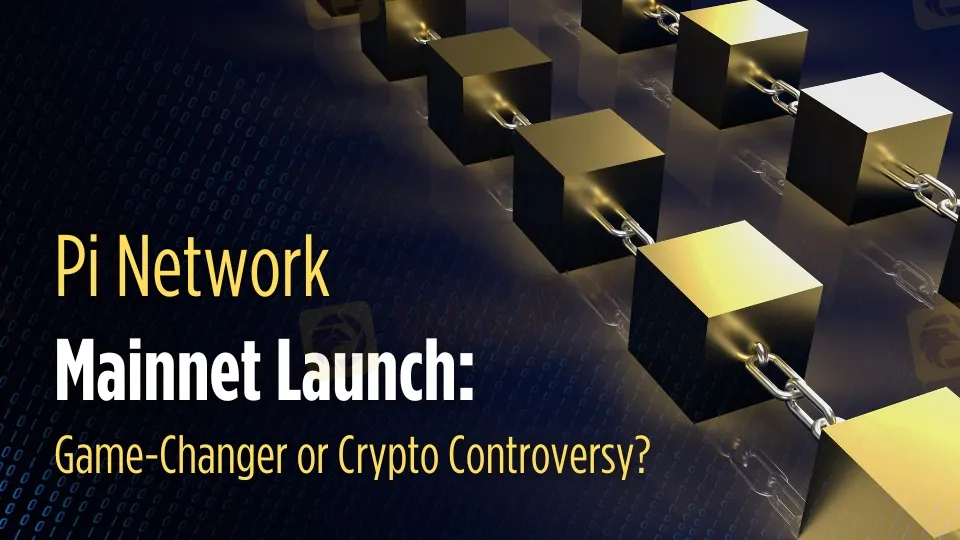Pi Network Mainnet Launch: Game-Changer or Crypto Controversy?
Abstract:Pi Network’s Mainnet launch sparks debate. With 100M users, KYC compliance, and Binance listing rumors, will it redefine crypto accessibility?

The cryptocurrency industry is buzzing with excitement and suspicion as the Pi Network prepares to launch its highly anticipated Mainnet on February 20th. Pi Network has gained a large following by promising to make cryptocurrency accessible to everyone, but its journey has not been without controversy. With over 100 million registered users and a decentralized blockchain, the project has the potential to disrupt the cryptocurrency sector. However, doubts regarding its mining methodology, legal status, and data security continue to fuel discussion.
Pi Networks Global Reach and User Base
Analyst Kim Wong, a strong supporter of Pi Network, highlighted the company's tremendous growth and global reach. The site has approximately 100 million registered users, 65 million of whom are actively engaged. Notably, 19 million users have undergone Know Your Customer (KYC) authentication, while around 10.5 million have Pi currencies in their wallets. Wong stresses Pi's fast, scalable, and Web3-ready blockchain, establishing it as a major rival in the cryptocurrency business.
“Pi Network is changing the game by making cryptocurrency accessible to everyone,” Wong told CNN. He also mentioned that Pi's commitment to KYC laws assures government compliance, which is a critical step towards widespread usage in the Web3 era.
Controversies Over the Pi Network
Despite its fast expansion, Pi Network is heavily criticized. One main point of worry is its referral-based mining mechanism, which has been compared to a pyramid scam. According to a famous cryptocurrency expert, no one has benefitted from Pi but the project's creators, who purportedly monetized user data and in-app advertisements. This has raised concerns, with some recommending users to sell any airdropped Pi money and invest in more practical projects.

The KYC requirement has also stirred discussion in the cryptocurrency community. Critics say that KYC undermines blockchain's decentralization. Wong, on the other hand, supports the practice, claiming that while transactions remain decentralized, KYC aids in the detection of criminal activity, assuring the platform's credibility.
A 2021 accusation of a data breach impacting thousands of Vietnamese customers fuels the debate. Although the Pi team refuted the allegations, the episode has tarnished the project's reputation. Social media users have even advised against investing in Pi, calling it a fraud.
Mainstream Traction and Exchange Listings
Despite skeptics, the Pi Network is gaining popularity. It has gotten listings on major exchanges including OKX, Bitget, and MEXC. Gate.io just incorporated Pi into their platform, allowing Pi holders to stake their tokens. Bitget honored Pi's expansion with a 150,000 Pi airdrop, which increased its prominence.
However, consumers in the United States are still unable to trade Pi on these platforms, restricting the company's worldwide reach.
Binance Listing: A Potential Game-Changer
The most popular rumor is about a possible Binance listing. Binance, being the world's largest cryptocurrency exchange, has the potential to provide Pi Network with tremendous liquidity and respectability. Analysts believe Pi's price might rise to $150-150-200, with long-term forecasts reaching $500 by 2030. Such a move would draw both institutional and retail investors, bolstering Pi's standing in the cryptocurrency market.
The Mainnet Launch: A Make-or-Break Moment
The crypto community is keenly following the Mainnet launch, which is only a few days away. Will the Pi Network fulfill its promise of financial inclusivity, or will cynicism prevail? The launch will decide if Pi can overcome its issues and establish itself as a credible competitor in the crypto market.
For the time being, Pi Network remains a divisive issue, with staunch advocates such as Kim Wong and severe detractors discussing its future. As the countdown to February 20 begins, one thing is certain: Pi Network's journey is far from done, and its influence on the cryptocurrency world might be huge.

Read more

B2BROKER Launches PrimeXM XCore Support for Brokers
B2BROKER launches PrimeXM XCore support and maintenance services, enhancing trading efficiency for brokers with expert management and optimization.

EU MiCA Update: 10 Authorized Stablecoin Issuers & 11 CASP Providers
Under MiCA, 10 firms have been authorized to issue e-money tokens (EMTs), commonly known as fiat-backed stablecoins. These issuers have launched a total of 15 EMTs, consisting of 10 euro-denominated tokens and 5 US dollar-denominated tokens.

Google Bitcoin Integration: A Game-Changer or Risky Move?
Google Bitcoin integration blends wallets with Google accounts, stirring security fears and adoption hopes. ZKP encryption aims for privacy.

XTB Secures Chilean License, Expands Latin America Footprint
XTB gains a securities agent license in Chile, boosting its Latin America presence. The broker plans to offer stocks, ETFs, and derivatives to local investors.
WikiFX Broker
Latest News
FCA Flags 9 Unlicensed Financial Website: Warning on Investor Risks
"I can't log in or withdraw funds"- Victim Said
Will SOLANA Survive the Meme Coin Collapse?
Cyprus Police Warn of Rising SMS Scams Targeting Binance Crypto Users
Pi Network Mainnet Launch: Game-Changer or Crypto Controversy?
GlobTFX Users Report Same Issue! But Why?
Rate Cut or Not? It Depends on Trump’s Policies
Why Do You Keep Blowing Accounts or Making Losses?
eToro Adds ADX Stocks to Platform for Global Investors
B2BROKER Launches PrimeXM XCore Support for Brokers
Rate Calc

